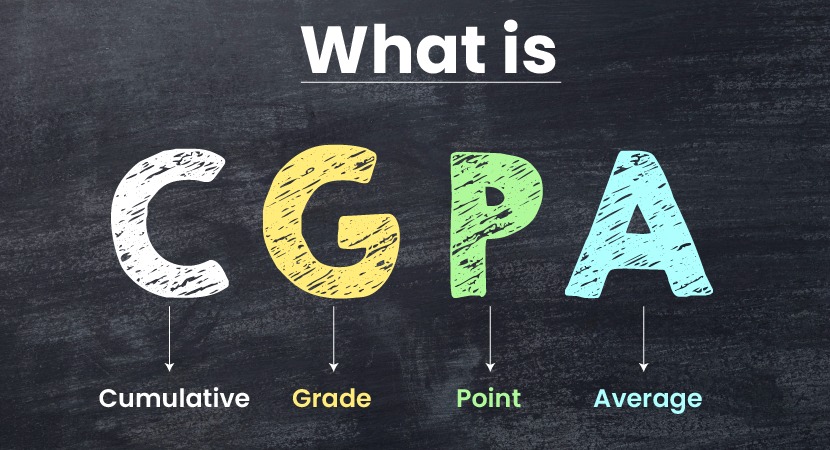CGPA, or Cumulative Grade Point Average, is a standardized method used by educational institutions worldwide to evaluate a student’s overall academic performance. It represents the average of grade points obtained in all subjects, usually over a semester or an entire academic program.
How to Calculate CGPA?
The CGPA calculation process is straightforward. Follow these steps to determine your CGPA:
Step 1: Identify the Grade Points for Each Subject
Every subject is assigned a Grade Point (GP) based on the marks obtained. Different universities and schools have varying grading scales, but a common scale is as follows:
| Percentage Range | Grade | Grade Point (GP) |
|---|---|---|
| 90 – 100 | A+ | 10 |
| 80 – 89 | A | 9 |
| 70 – 79 | B+ | 8 |
| 60 – 69 | B | 7 |
| 50 – 59 | C+ | 6 |
| 40 – 49 | C | 5 |
| Below 40 | F | 0 |
Step 2: Sum Up the Grade Points
After identifying the grade points for each subject, sum up all the grade points obtained in different subjects.
Step 3: Divide the Total Grade Points by the Number of Subjects
Use the formula:

For example, if a student has the following grade points in five subjects:
- Subject 1: 8
- Subject 2: 7
- Subject 3: 9
- Subject 4: 6
- Subject 5: 8
Total Grade Points = 8 + 7 + 9 + 6 + 8 = 38
CGPA = 38 / 5 = 7.6
Step 4: Convert CGPA to Percentage (Optional)
Many universities require students to convert CGPA into percentage using a standardized formula:
Percentage = CGPA × 9.5
For the above example:
7.6×9.5=72.2%
Thus, a CGPA of 7.6 translates to 72.2%.
CGPA Calculation for Different Educational Boards
CBSE (Central Board of Secondary Education)
In CBSE, CGPA is directly mentioned on the report card. However, you can calculate it manually by averaging the grade points of all subjects.
University Grading System
Most universities follow a Semester Grade Point Average (SGPA) system, where each semester’s SGPA is calculated separately and then averaged to find the overall CGPA.
SGPA vs. CGPA: Understanding the Difference
SGPA (Semester Grade Point Average)
SGPA is the average of grade points obtained in a single semester. The formula to calculate SGPA is:

CGPA (Cumulative Grade Point Average)
CGPA is the overall performance across multiple semesters:

Advantages of CGPA System
- Standardized Evaluation: CGPA provides a uniform grading system that eliminates the stress of individual marks.
- Encourages Consistent Performance: Since CGPA is cumulative, students are encouraged to maintain consistent academic performance.
- Better Academic Insights: Universities and employers can quickly assess a student’s academic standing without analyzing individual subject marks.
Frequently Asked Questions (FAQs)
1. Can CGPA be converted to GPA?
Yes. Different countries use different GPA scales (4.0, 5.0, 10.0). Conversion depends on the institution’s scale. Common conversion methods include:
- CGPA (out of 10) ÷ 2.5 = GPA (out of 4)
- CGPA (out of 10) × 0.4 = GPA (out of 4)
2. What is a good CGPA in university?
A CGPA of 7.5 and above is generally considered good, and anything above 8.5 is excellent.
3. Is CGPA the same in all universities?
No. Universities have different grading systems and conversion formulas. Some use a 10-point scale, while others use a 4-point or 5-point scale.
4. How can I improve my CGPA?
- Focus on Assignments & Exams: Ensure strong performance in coursework and final exams.
- Consistent Study Routine: Regular study habits improve subject understanding and performance.
- Seek Help When Needed: Consult professors or tutors for guidance.
- Time Management: Prioritize academic goals effectively.
5. Can CGPA be improved after graduation?
No, once the final CGPA is recorded, it cannot be changed. However, students can pursue additional certifications or courses to strengthen their academic profile.
Concluding remarks
Understanding how to calculate CGPA is essential for students aiming to track their academic performance. By following the standard calculation method, students can evaluate their progress and make informed decisions about their education. Whether converting CGPA to percentage or GPA, the key is to understand the grading structure used by your institution.







